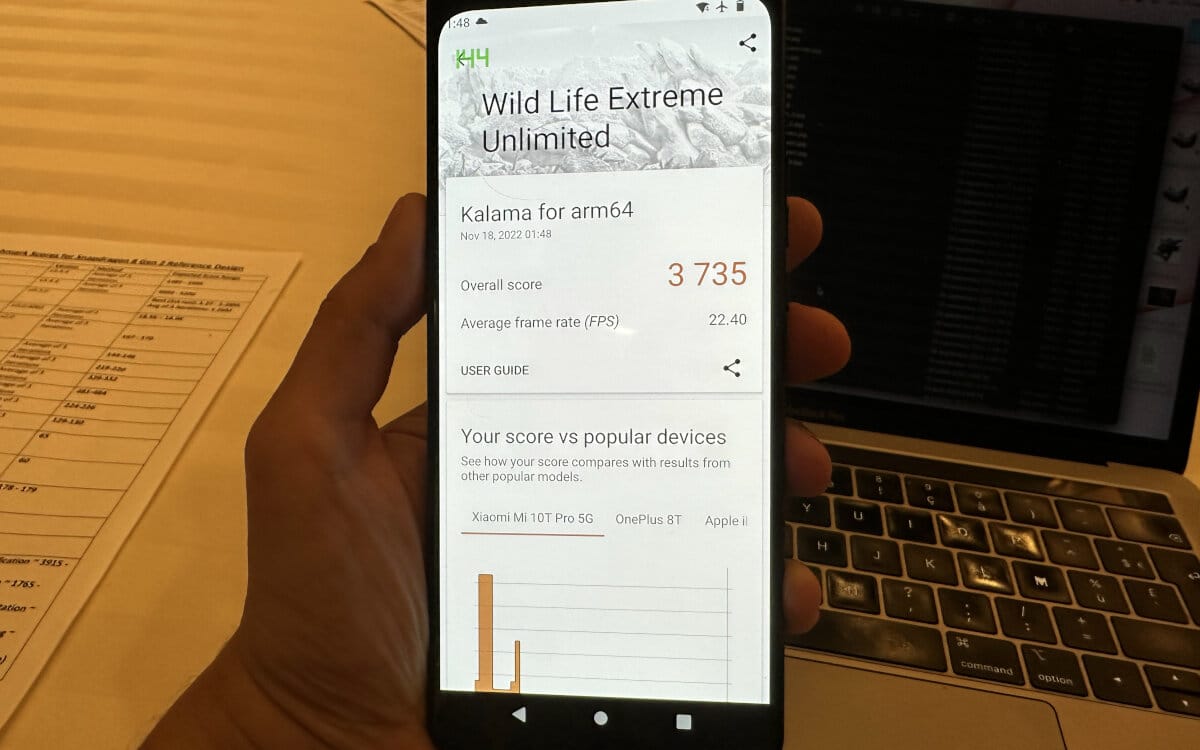Qualcomm introduced the Snapdragon 8 Gen 2 last week, which will power the vast majority of high-end smartphones in 2023, including Samsung’s Galaxy S23. Following its formalization, we had the opportunity to take control of a test platform in order to measure the improvements in terms of performance. And the results are very interesting.

Last week, we followed for you the information of the Snapdragon Summit, the famous annual conference of Qualcomm organized in Hawaii. On this occasion, the American firm presented the Snapdragon 8 Gen 2, the high-end SoC that will equip practically all high-end phones in the first half of 2023. Among them there will be Oppo’s next Find X, the Magic 5 from Honor, the successors to the Xiaomi 12 and 12 Pro, as well as the OnePlus 11. And these are just some of the phones that have been officially mentioned.
Read also – Qualcomm launches two new chips for headphones, goodbye latency problems!
But some brands have not yet announced the integration of Snapdragon 8 Gen 2 in their future terminals. This is the case of Samsung whose Galaxy S23 should all integrate the Qualcomm SoC, even the European versions. And that’s good news, because the component benefits from numerous improvements, whether at the level of the CPUfrom GPUsof the Photoof display or even the connectivity. Areas that will all benefit from a strong increase in the computing capacities of the Hexagon neural coprocessor.
Is the Snapdragon 8 Gen 2 more powerful than the Snapdragon 8+ Gen 1?
If Qualcomm has focused this year on artificial intelligence, this does not mean that graphics and application processors have been forgotten. On the contrary, they have also been reinforced. Qualcomm announces a CPU performance increase of 35%for an improvement in the energy efficiency of 40%while the new Adreno 740 pro would have 25% more power for improved energy efficiency of 45%.
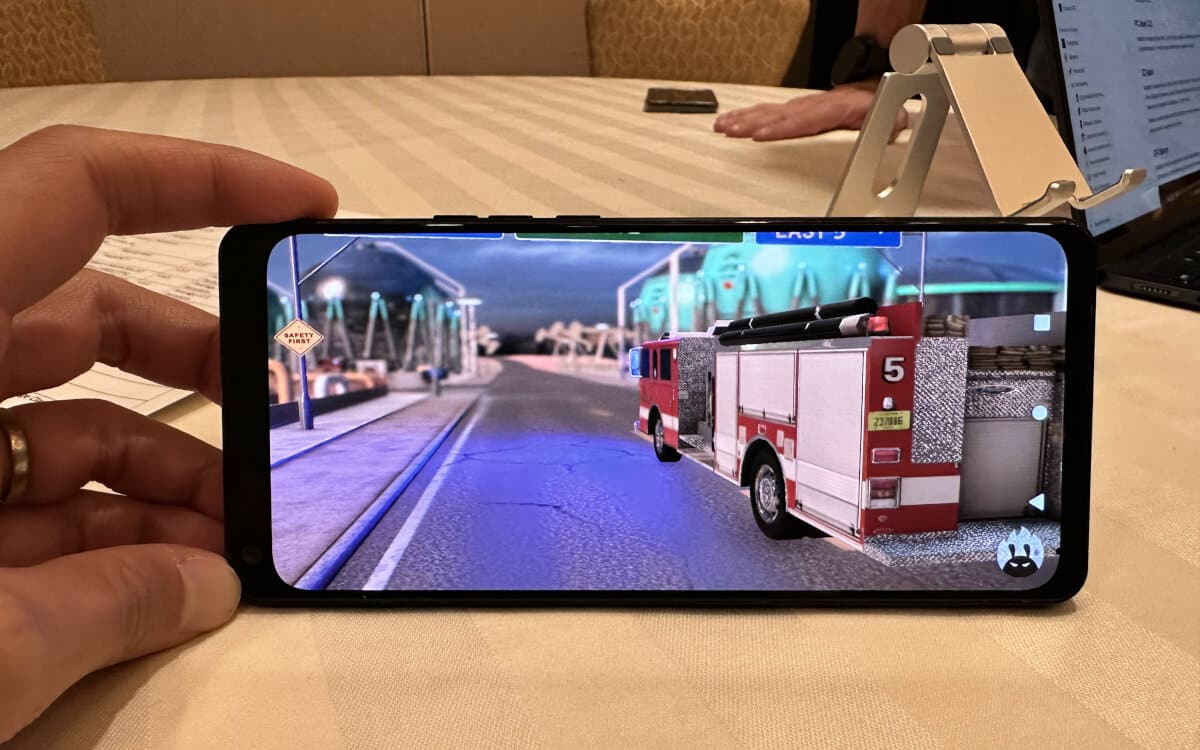
These are quite high numbers, of course. And we were looking forward to testing that with some benchmarks. Qualcomm has therefore provided us with a few test platforms, equipped with the famous applications that we use regularly: Geekbench, AnTuTu, 3DMark, etc. Note that this test smartphone is equipped with 12 GB RAM and 256 GB of storage. It has a Full HD+ screen and works on Android 13. Now let’s move on to our test results.
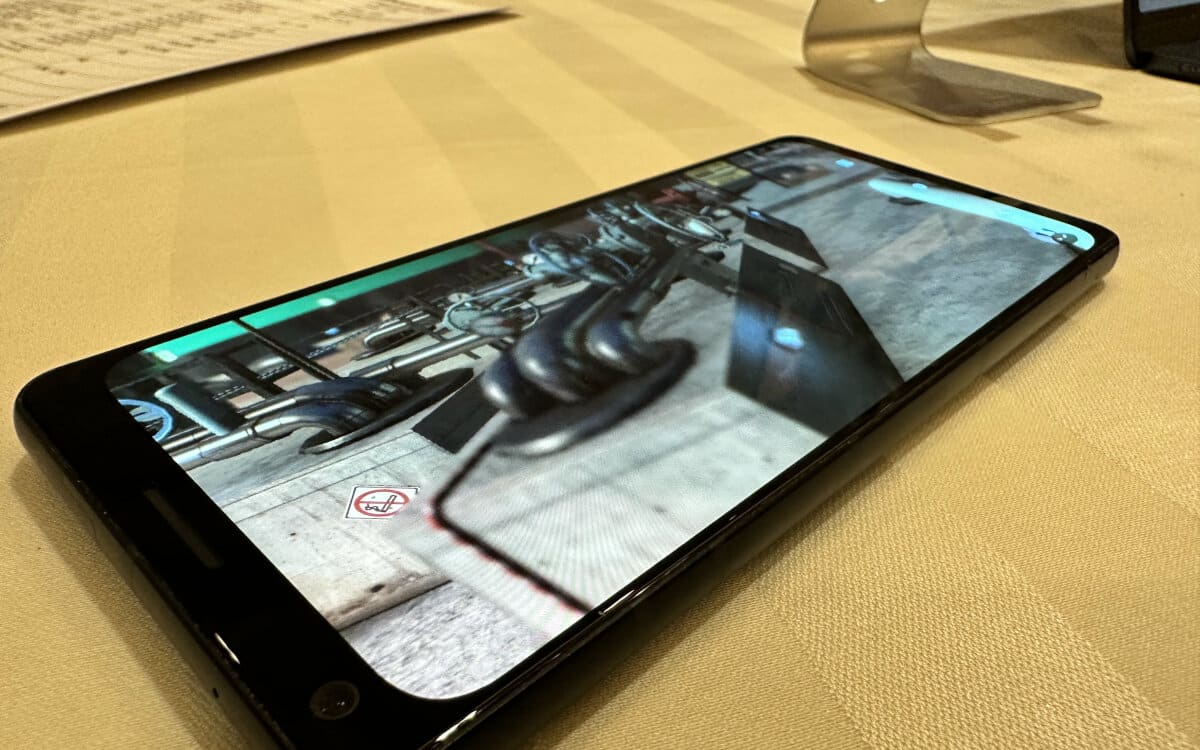
The Snapdragon 8 Gen 2 breaks records on AnTuTu and 3D Mark
With AnTuTu to start. The test platform scores very slightly lower than 1.3 million points. This is obviously a very good score. Remember that platforms under Snapdragon 8+ Gen 1 generally do not exceed one million points. Only the ROG Phone 6 and the Xiaomi 12T Pro have achieved this feat. And they did not exceed 1.2 million points. There is therefore a clear improvement with the Snapdragon 8 Gen 2. AnTuTu also indicates that the platform has heated up quite a bit: 35°.
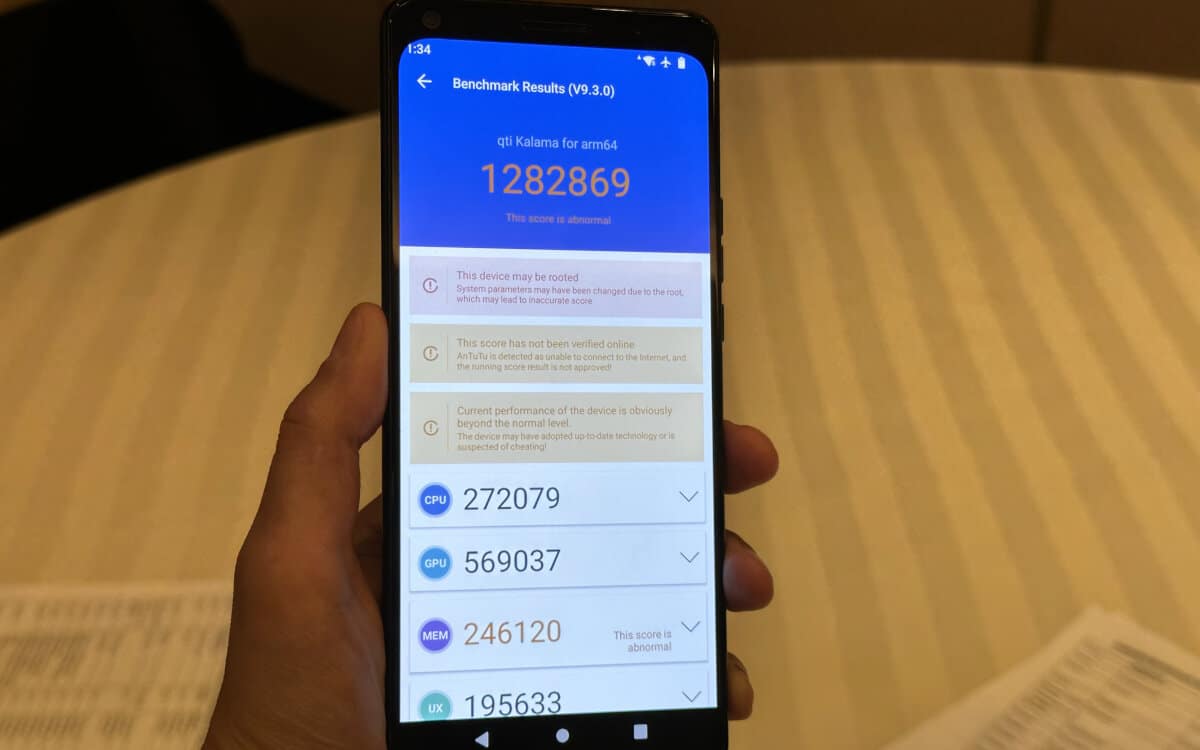
With Geekbench, the Snapdragon 8 Gen 2 gets a score of 1490 dots in single-core and 5100 stitches in multi-core. Again, only the ROG Phone 6 comes close to such results this year. There is therefore a good margin of progress to be expected from brands that are less demanding in terms of performance. On PCMark, the platform oscillates between 18,500 and 19,000 points, a very decent score, but far from surprising.
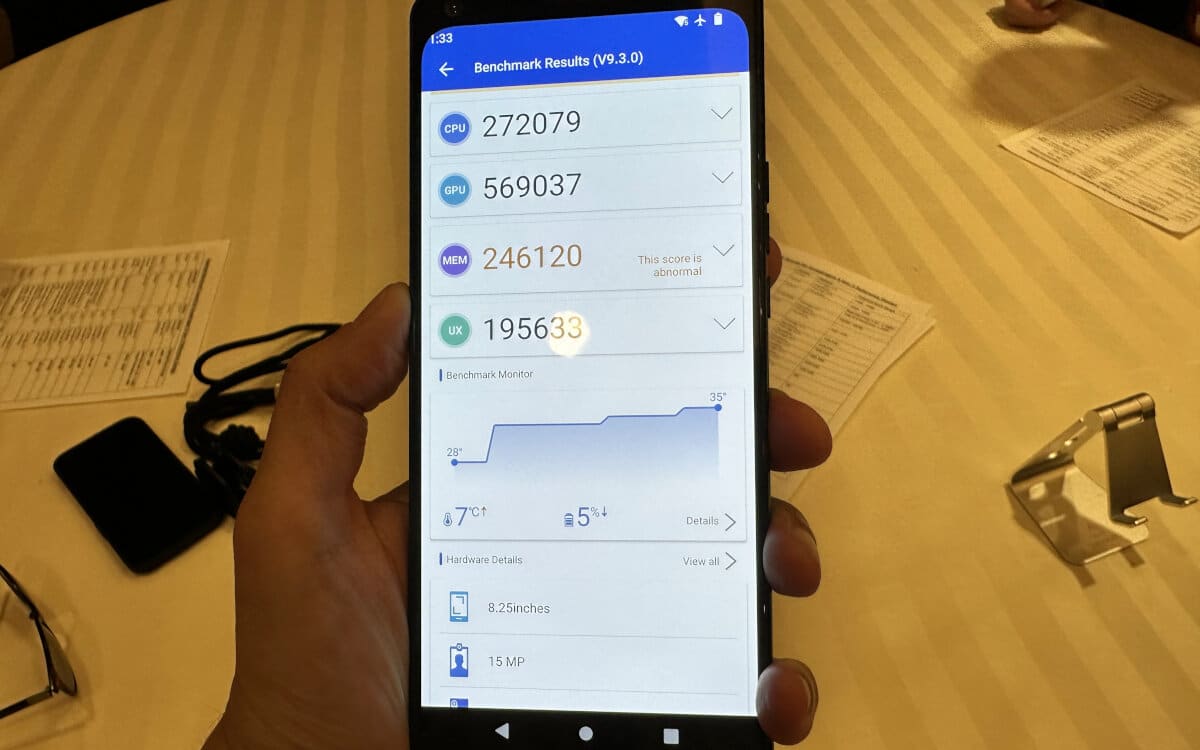
We also tested 3D Mark. And in particular the Wild Life Unlimited and Wild Life Extreme Unlimited tests. We got more than 14,000 stitches with the first and 3735 dots with the second. No Android smartphone is capable of reaching such figures. On the other hand, the iPhone 14 Pro Max does not deserve it. It is above the Snapdragon 8 Gen 2 on Geekbench, but still below on 3DMark and AnTuTu. On the other hand, the iPhone 14 is left behind.
The power of Snapdragon 8 Gen 2 useful even for those who do not play
This first handling of the Snapdragon 8 Gen 2 is therefore very encouraging for all lovers of the Android ecosystem. But is it really useful on a daily basis? Wasn’t the Snapdragon 8 Gen 1 already powerful enough? We posed the question to Shahin Farahini and Karl Whealtonrespectively Director of Chipset Development and Director of CPU and Artificial Intelligence Development at Qualcomm.
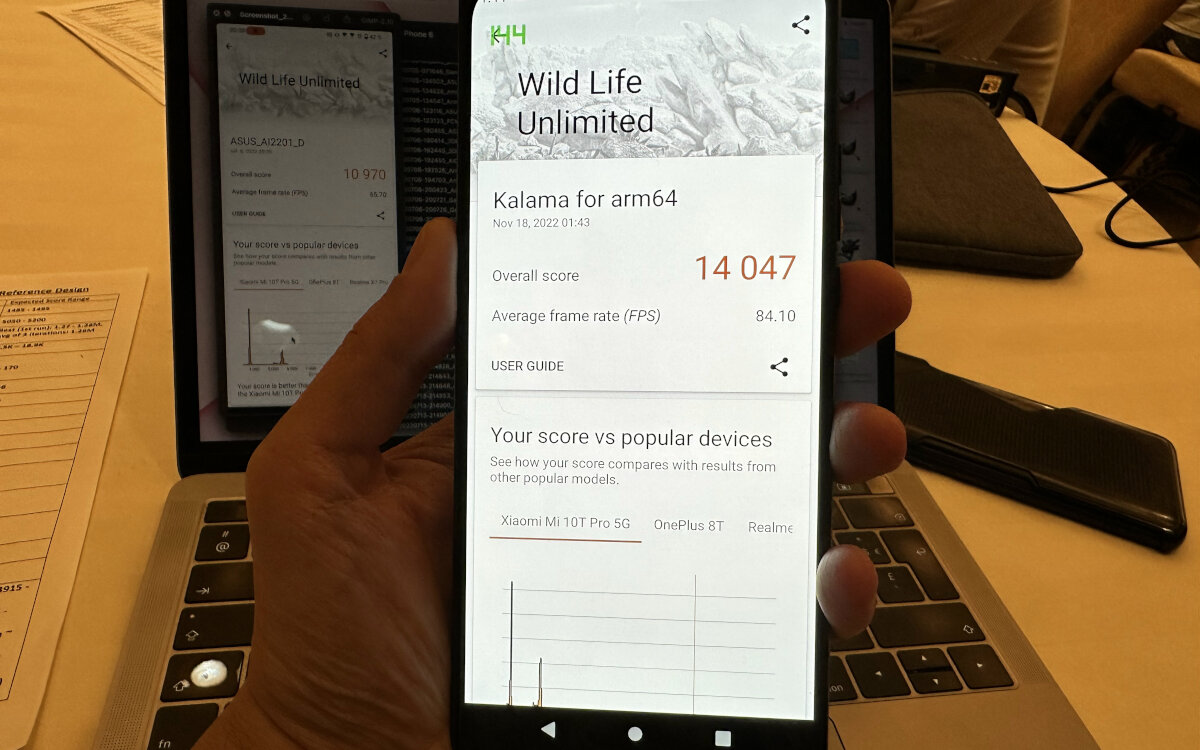
And their answer is interesting. They first recall that smartphones have more and more features that work permanently. With the advent of artificial intelligence, the number of processes has greatly increased. Even though many calculations are supported by Hexagon (the NPU) and Adreno (the GPU), the CPU is still very important to organize everyone’s tasks. He must therefore be able to respond as quickly as possible. Hence the importance of increasing the characteristics of the CPU. On a daily basis, this results in a better fluidity of the experience. And it’s true, it’s essential.
